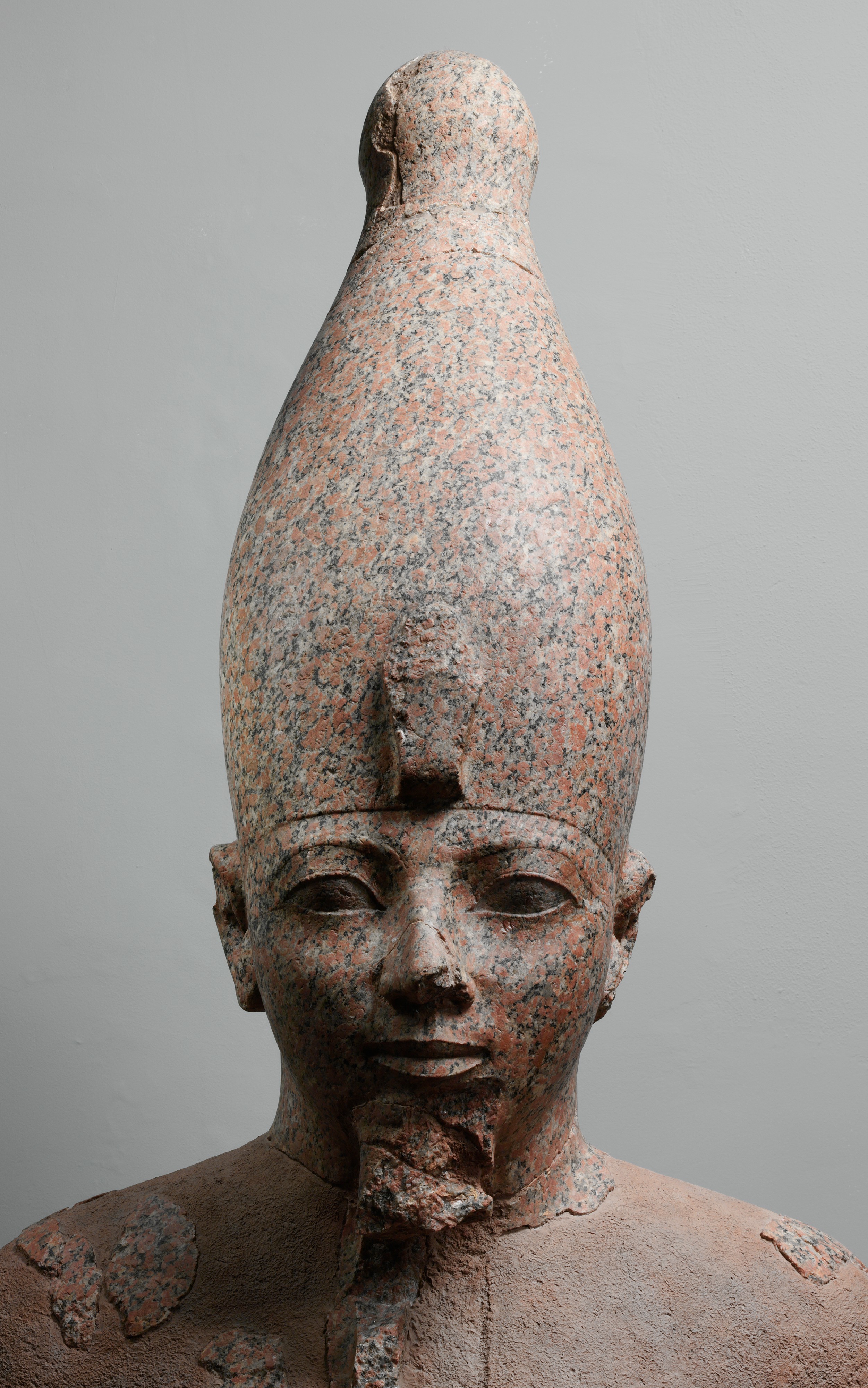Large Kneeling Statue of Hatshepsut
New Kingdom
In her terraced temple at Deir el-Bahri, there were at least ten over life-sized kneeling statues of Hatshepsut. She is shown as a male king wearing a kilt, a false beard, and either the white crown of Upper Egypt (as in this statue), or the nemes–headcloth (29.3.1). In her hands she holds round offering vessels, called nu–pots, and the inscription on the base of each statue identifies the offering she makes to the god Amun. These huge statues flanked the processional way along which Amun's image was carried toward the temple's main sanctuary during a yearly festival. The statues were probably positioned on the temple's second terrace.
This statue represents Hatshepsut wearing the white crown of Upper Egypt (the south), so it may have been placed on the southern side of the processional way. On the base, Hatshepsut is said to be offering fresh plants to Amun. On the back pillar, she is identified by her Horus name, Wosretkau, which is written in a rectangular device called a serekh. One also finds fragments of her throne name, Maatkare, and her personal name, Hatshepsut, both of which are written inside oval cartouches.
In 1930, the Museum's Egyptian Expedition found the body fragments of this statue buried in an area called the "Hatshepsut Hole." Some eighty years earlier, the head had been found and taken to Berlin by Egyptologist Richard Lepsius. The pieces of the statue were reunited in an exchange organized by Herbert Winlock, director of the Museum's excavations at Thebes. This and other exchanges were made possible by the generosity of the Egyptian Antiquities Service, which ceded many fragmentary statues to the Metropolitan Museum in the division of finds.
Due to rights restrictions, this image cannot be enlarged, viewed at full screen, or downloaded.
This artwork is meant to be viewed from right to left. Scroll left to view more.





